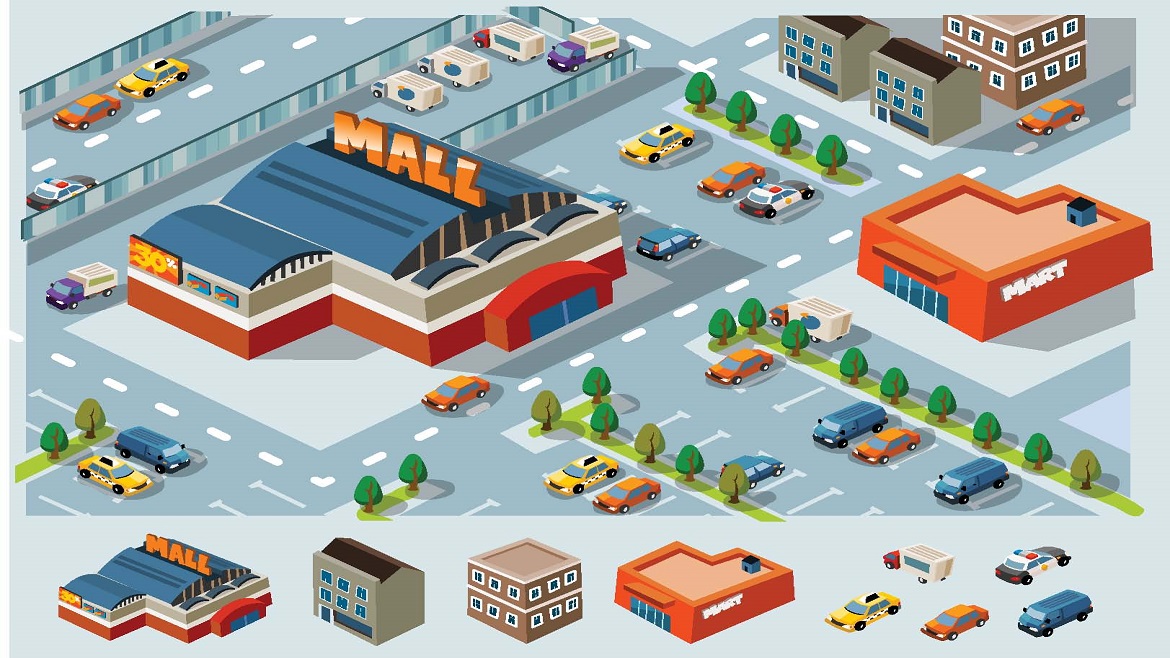The idea of the mall as a hermetically sealed box, appearing like a space ship while turning its back to the local community and having little connection to the urban streetscape, now seems a product from the last century.
Retail is experiencing dramatic re-calibration with the explosion of on-line shopping and the resultant closure of many stores. In this new world, shopping centre owners will need to re-think the notion of the shopping centre or face death.
Some malls will be re-positioned as niche players with specialist retail offers. Others will be transformed into outlet malls and entertainment centres - or re-purposed altogether. In Indianapolis, the Circle Centre Mall has leased its 4th floor to a local college and other space is soon to be occupied by government offices. Yet this re-think will also have to go to the heart of the business model.
Shopping centres generally employ a 70/30 ‘net to gross’ rule, which defines the proportion of tenanted to public space. In the future, the operators of these businesses will need to re-think this principle.
As many more customers shop online, anchor stores and major space users (MSUs) will require less front-of-house space. What's more, new types of tenants will appear on the scene, such as pure play online retailers and FMGC brands.
These new players will not want conventional fixed ‘concrete boxes’ on long leases. They will demand new types of ‘soft’, programmable space that allows them to create event driven, convivial, hybrid experiences for their ‘fans’ throughout the calendar year.
Tenant revenue models will increasingly be based on temporary space rather than long-term rents for conventional shops. This will lead to an increase in the proportion of programmed public space and a change in the marketing of shopping centres.
If shopping centres do not adapt to these new demands, retailers and brands will seek new physical channels. They may revert to the high street, appear in markets or occupy less conventional structures with environments that question the old idea of a shop.
Sportswear giant Nike, for example, is increasingly occupying interesting warehouse spaces. Uniqlo and illey coffee are just two of many brands that use shipping containers to tell their stories. The Belgian fashion brand Dirk Bikkembergs created an apartment setting where customers could experience the brand in the context of everyday domestic life.
These pioneering brands will need shopping centres that make it easy for them to create experiences that are about creating surprise, discovery, learning, entertainment and serendipity, rather than simply being built around the transaction.
“In the future retailers need to stop thinking about making shopping entertaining and concentrate on making entertainment shoppable instead,” says Hamilton Smith. Similarly, Marc Gobé has also spoken about the outmoded sterility of buying in the stores of tomorrow.
Ultimately, the future of the shopping centre will come about through rethinking and reimagining. Incremental improvements don’t work in a world where change is not incremental.
The views and opinions expressed in this article are those of the authors and do not necessarily reflect the views of The Economist Intelligence Unit Limited (EIU) or any other member of The Economist Group. The Economist Group (including the EIU) cannot accept any responsibility or liability for reliance by any person on this article or any of the information, opinions or conclusions set out in the article.




